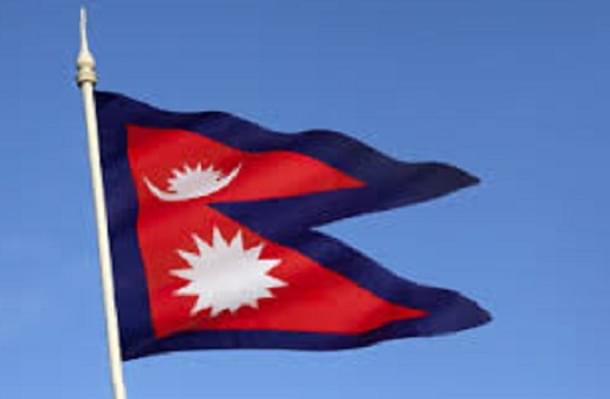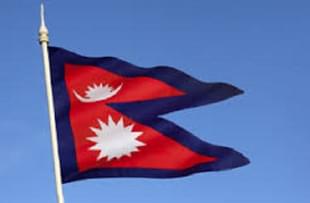World
It's Not Nepal Vs India But Kathmandu Elite Vs Madhesis
Sandip Ghose
Nov 04, 2015, 11:57 PM | Updated Feb 11, 2016, 08:42 AM IST
Save & read from anywhere!
Bookmark stories for easy access on any device or the Swarajya app.


History may well judge that at the cost of some popularity, India acted as a welcome catalyst in Nepal
One striking element of the recent change of guard in Nepal, after the promulgation of the new Constitution, is that once arch enemies – the ‘Royalist’ (RPP-N) and Maoists (UCPN-M), joined forces to elect K P Oli of CPN-UML as Prime Minister trouncing Sushil Koirala of Nepali Congress .
The latter is generally perceived to be “India Friendly” and sympathetic towards the Madhesi cause. It is ironical – to say the least – that RPP-N went to the elections with pro-Hindu and pro-monarchy slogans, the very principles that Maoists had fought against. Power they say is the ultimate glue – but here the prime motivation seems to have been keeping Indian influence at bay.
Thus India appeared outmanoeuvred and its concerns on the new constitution – especially the interests of the Madhesis (the inhabitants of the southern plains of Terai adjoining India) were ignored. The last ditch efforts of the Foreign Secretary to salvage the situation were rebuffed and the Constituent Assembly went ahead to promulgate the new Constitution as per the original draft. The rearguard actions that many believe India prompted – resignation of Baburam Bhattarai, the second most important leader and principal ideologue of the Maoists, and Sushil Koirala’s hurried introduction of Constitution amendment proposals before the Constituent Assembly was dissolved – were seen as too little too late.
Critics at home and abroad were quick to view this as a snub to the Modi government. Hasty judgements were pronounced on Modi government’s faltering neighbourhood strategy following the initial hope and hype. The recently strained relationship with Maldives was cited as a parallel.
India’s equation with Nepal has been and will always be different and cannot be compared with that of any other neighbour. India is a neighbour Nepalis love to hate and India, to use the clichéd ‘elder brother’ analogy, likes to believe it knows what’s best for Nepal. This relationship of sibling sentimentality is age old and cannot be easily changed.
There is too much at stake for both countries – geographically, emotionally (socially), economically and diplomatically – to remain disengaged for long. Apart from everything else, India will always remain Nepal’s largest market for employment as well for products manufactured in or routed through Nepal (via official or unofficial channels).
Nepalis understand this well even while playing the “China Card’. Therefore, notwithstanding their public posturing and grand-standing in media, Nepali politicians rush to Delhi at the slightest sign of tension. But, that does not stop them from periodically raising the bogey of the ”Indian Hand” and the scary spectre of Sikkim-isation of Nepal (however, improbable). Burning of Indian Flag or effigies of Indian Prime Ministers is par for the course. This many see as a clever way of ensuring that Nepal’s engagement with India is at their convenience.
All major political movements of Nepal in recent years have been at least partly hosted – by default or otherwise – in India. Both the ”Jan-Andolan I” of 1990 (which replaced absolute monarchy with Constitutional monarchy) and ”Jan-Andolan 2” of 2006 – that overthrew Gyanendra’s brief tryst with ”Direct Rule” (staging a “Royal Coup” as it were – taking advantage of the political instability caused by the Maoist War) were ”mid-wifed” by India. Similarly, it is no state secret that, the Maoist movement underwent a surrogate pregnancy in the fertile Indo-Gangetic plains and many Maosist leaders frequently operated out of Indian “safe-houses”.
India’s imprint was unmistakable in the interim Constitution of 2007. After the elimination of monarchy and establishment of the republic, it was widely considered a progressive and inclusive document which the incumbent Constituent Assembly would only improve upon.
In the protracted exercise that followed, lasting almost 7 years, the new Nepali lawmakers came up with a document that was good in parts, but conspicuously short-changing the ‘plains people’ – Madhesis, Jan-jatis and Tharus. There was a virtual dismembering of the region by a vertical dissection of the provinces dramatically reducing their ‘Direct Representation’ in Parliament.
The political intent of such a retrograde move was not difficult to gauge. Historically the hills people (especially the Royalty, Ranas and Upper Classes of Kathmandu) have been scornful towards the Madhesis – viewing them as “half-Indians” much like illegal immigrants. However, over time, Madhesis have emerged as a very large constituency. The end of the “Maoist War” – which they had solidly backed – saw them growing in stature as a political force that could at some stage challenge the dominance of the Kathmandu political nobility. Cutting the Madhesis to size would, therefore, mean limiting India’s influence as well.
This is where probably the Nepali politicians overplayed their hand or as some would go to the extent of saying – tried to be “clever by half”. As should have been anticipated, this set the Terai ablaze in an agitation that has already claimed many lives. Then there is the infamous blockade – which Nepalis believes has been imposed (or, at least, inspired) by India to choke them of essential supplies.
The Kathmandu political and intellectual elite (yes, Nepal has its own version of Lutyens’ power figures) are pitching this as a ‘Nepal Vs India’ stand-off. Luckily not everyone in Nepal are inclined to take such a blinkered position. Many respected voices – who can’t be dismissed as Indian ”agents”, are speaking up on the inequities of the new constitution and also for the cause of the plains people.
While fingers are being pointed at recent ”mismanagement”—alleging India had got its eye off the ball temporarily from its backyard, given other global diplomatic distractions—I would venture to suggest the damage was already done in the 2013 elections. That election fractured the Madhesi mandate with various splinter groups emerging in the region. The Indian establishment could have engaged more proactively at that stage and use its considerable persuasion powers to see the Madhesi block remain intact in order to have adequate representation in the new Constituent Assembly. India failed to chaperone to its logical end the journey it was privileged to flag-off in 2006.
It is debatable whether an earlier intervention would have had an impact given the fact that the major political parties were moving as per a well aligned plan. Whether India is tacitly supporting or silently stoking these protests is a subject for another day’s debate. But, this strategy of passive stand-off is, perhaps, the best India could do in the present circumstances without taking any other precipitating steps.
Obviously, a lot of posturing is taking place, with the Madhesi leadership threatening an extended battle. Although, Madhes is definitely a distinct and sizeable ethno-geographic entity that can be alienated only at Nepal’s own peril.
Without the Terai, Nepal can’t be a viable economic entity. It is the most productive region of the country with the majority of the country’s industries. The main trade corridor of the country stretches from Biratnagar in the East to Nepalgunj. Whether tourism, Gorkha pensions and remittances of Nepalis working abroad and, of course, foreign aid will be able to sustain the hills economy is a question only Lord Pashupati may be able to answer. Without access through the Terai – the rest of Nepal would become only more ‘land-locked’ – as many areas of the hills can be accessed only by air, arduous treks or via the Terai.
As a very senior retired Nepal hand of the Indian government – who must remain unnamed – wrote to me in a private response to another article:
While unfortunate, it may have provided the bahun leadership of the three parties a reality check – even as they were all set to ride roughshod over the Madhesis- women, janjatis and Tharus. History may well judge that at the cost of some popularity, India acted as a welcome catalyst…
In the same vein, Nepali Congress’ decision to contest – albeit unsuccessfully – both the posts of Prime Minister and President is significant – as it signals there is an alternative viewpoint within the Parliament.
It would be a major political miscalculation by Nepal to believe India can remain aloof or staved off from developments in a strategically important stretch contiguous with its heartland. It would also be disingenuous to term India’s interest in ensuring a fair-deal for the people in the Terai planes as a ‘hegemonistic‘ interference.
In that direction, Nepal’s new Deputy Prime Minister Kamal Thapa’s visit to Delhi – without waiting for ‘‘who blinks first” – has at least opened up a window for breaking the impasse. Even after Monday’s unfortunate denouement at Raxaul – when one person of Indian origin was killed and several injured in police action – Thapa’s reactions were encouraging. He is one person in the ruling establishment who has roots in the Terai – being an MP from Makwanpur. Hopefully, all stakeholders will soon get back to the table to rewrite a solution that will stand the test of time. Years down the line – the blockade will probably be remembered only as a minor blip in an old familial affair.
A prodigal Bong, born contrarian - politically right not correct. Ex-Gastrophile now living on trivia,current-affairs and Scotch. Nothing official about Tweets.





